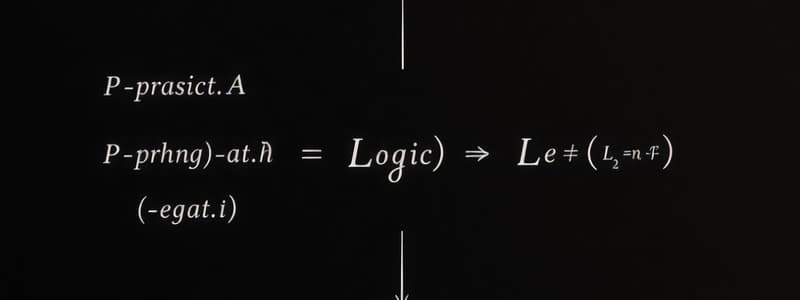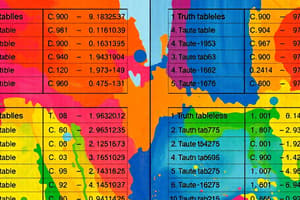Podcast
Questions and Answers
In which continent is Egypt located?
In which continent is Egypt located?
- Europe
- Asia
- South America
- Africa (correct)
The Nile River is the shortest river in the world.
The Nile River is the shortest river in the world.
False (B)
How many miles long is the Nile River?
How many miles long is the Nile River?
4,000
The Nile River begins in central Africa and runs ________.
The Nile River begins in central Africa and runs ________.
Which of the following is a region of Egypt?
Which of the following is a region of Egypt?
Upper Egypt is the Northern Region.
Upper Egypt is the Northern Region.
Upper Egypt is also known as the _________ Region.
Upper Egypt is also known as the _________ Region.
In which direction is the Southern Region located on the river?
In which direction is the Southern Region located on the river?
The fertile land in Egypt is 50 miles wide.
The fertile land in Egypt is 50 miles wide.
Flashcards
Egypt's Geography
Egypt's Geography
Egypt is located in Northern Africa
Nile River
Nile River
The longest river in the world, approximately 4,000 miles long, begins in Central Africa and runs north.
2 Regions of Early Egypt
2 Regions of Early Egypt
Southern Region and Northern Region.
Southern Region
Southern Region
Signup and view all the flashcards
Northern Region
Northern Region
Signup and view all the flashcards
Fertile Land
Fertile Land
Signup and view all the flashcards
Study Notes
Propositional Logic
- Explores propositions and their relationships in logic.
- A proposition is a statement that is either true or false, but not both.
Examples of Propositions
- The sun is shining.
- 2 + 2 = 4
- All men are mortal.
Non-Propositions Examples
- What time is it?
- Be quiet!
x + y = 5(Equation)
Logical Connectives
- Symbols used to combine simple propositions into compound ones.
Common Logical Connectives
- Negation (¬): Reverses the truth value of a proposition; if
pis true,¬pis false, and vice versa. - Conjunction (∧): True only if both propositions are true; if
pandqare true,p ∧ qis true. - Disjunction (∨): True if at least one of the propositions is true; if
porqis true,p ∨ qis true. - Implication (→): False only if the first proposition is true and the second is false; if
pis true andqis false,p → qis false. - Double Implication (↔): True only if both propositions have the same truth value; if
pandqare both true or both false,p ↔ qis true.
Truth Tables
- Displays all possible truth values of a compound proposition for all possible combinations of truth values of its simple propositions.
Truth Table - Negation (¬)
- p = V, ¬p = F
- p = F, ¬p = V
Truth Table - Conjunction (∧)
- p = V, q = V, p ∧ q = V
- p = V, q = F, p ∧ q = F
- p = F, q = V, p ∧ q = F
- p = F, q = F, p ∧ q = F
Truth Table - Disjunction (∨)
- p = V, q = V, p ∨ q = V
- p = V, q = F, p ∨ q = V
- p = F, q = V, p ∨ q = V
- p = F, q = F, p ∨ q = F
Truth Table - Implication (→)
- p = V, q = V, p → q = V
- p = V, q = F, p → q = F
- p = F, q = V, p → q = V
- p = F, q = F, p → q = V
Truth Table - Double Implication (↔)
- p = V, q = V, p ↔ q = V
- p = V, q = F, p ↔ q = F
- p = F, q = V, p ↔ q = F
- p = F, q = F, p ↔ q = V
Tautologies, Contradictions, Contingencies
- Tautology: A compound proposition that is always true.
- Contradiction: A compound proposition that is always false.
- Contingency: A compound proposition that can be true or false, depending on its simple propositions.
Laws of Propositional Logic
- Rules used to simplify or transform compound propositions.
Common Laws of Propositional Logic
- Double Negation: ¬¬p ≡ p
- De Morgan's Laws:
- ¬(p ∧ q) ≡ ¬p ∨ ¬q
- ¬(p ∨ q) ≡ ¬p ∧ ¬q
- Commutativity:
- p ∧ q ≡ q ∧ p
- p ∨ q ≡ q ∨ p
- Associativity:
- (p ∧ q) ∧ r ≡ p ∧ (q ∧ r)
- (p ∨ q) ∨ r ≡ p ∨ (q ∨ r)
- Distributivity:
- p ∧ (q ∨ r) ≡ (p ∧ q) ∨ (p ∧ r)
- p ∨ (q ∧ r) ≡ (p ∨ q) ∧ (p ∨ r)
Applications
- Applications are found in computer science, philosophy, and mathematics.
- Used in the design of digital circuits, program verification, artificial intelligence, philosophical argument analysis, and as a basis for set and model theory.
Algorithms and Data Structures
Sorting
Problem
- Given a sequence of n elements $a = (a_1, a_2,..., a_n)$.
- Search a permutation of a $(a'_1, a'_2,..., a'_n)$, such that $a'_1 \leq a'_2 \leq... \leq a'_n$.
Sorting Algorithms
- Selection Sort
- Find the smallest element in a and swap with the first element.
- Find the smallest element in $a_2... a_n$ and swap it with $a_2$.
- Continue until a is sorted.
- Insertion Sort
- Elements of a are considered one at a time.
- Each element is inserted into the correct spot in the already sorted sequence $a_1... a_{i-1}$.
- Bubblesort
- Compares consecutive elements and swaps them if they are in the wrong order.
- This is repeated until no more swaps are required.
- Mergesort
- Split a into two halves.
- Sort each hafl recursively.
- Merge the two sorted halves.
- Quicksort
- Select a pivot element from a.
- Divide a into two parts. Elements that are less than the pivot element and parts that are greater than the pivot element.
- Sort the two parts recursively.
Properties
- In-place: Only requires a constant quantity of additional memory.
- Stable: Maintains the relative order of elements with equal value.
Sorting Algorithms - Overview
- Selection Sort
- In-place: Yes
- Stable: No
- Time complexity (average): $O(n^2)$
- Time complexity (worst case): $O(n^2)$
- Insertion Sort
- In-place: Yes
- Stable: Yes
- Time complexity (average): $O(n^2)$
- Time complexity (worst case): $O(n^2)$
- Bubblesort
- In-place: Yes
- Stable: Yes
- Time complexity (average): $O(n^2)$
- Time complexity (worst case): $O(n^2)$
- Mergesort
- In-place: No
- Stable: Yes
- Time complexity (average): $O(n log n)$
- Time complexity (worst case): $O(n log n)$
- Quicksort
- In-place: Yes
- Stable: No
- Time complexity (average): $O(n log n)$
- Time complexity (worst case): $O(n^2)$
Search Algorithms
Problem
- Given a sequence of n elements $a = (a_1, a_2,..., a_n)$ and an element x.
- Searched. The index i of the element in a, such that $a_i = x$, or -I, if x does not occur in a.
Search Algorithms
- Lineare Suche
- Every element is checked in every a until the x is found.
- Binäre Suche
- Works only on sorted sequences.
- x is coompared with the average element in a.
- Search in the right half or a if x is bigger than the middle element.
- Repeat this until x is found or the sequence is empty.
Summary
| Algorithm | Time complexity (average) | Time complexity (worst case) |
|---|---|---|
| Linear Search | $O(n)$ | $O(n)$ |
| Binary Search | $O(\log n)$ | $O(\log n)$ |
Studying That Suits You
Use AI to generate personalized quizzes and flashcards to suit your learning preferences.




